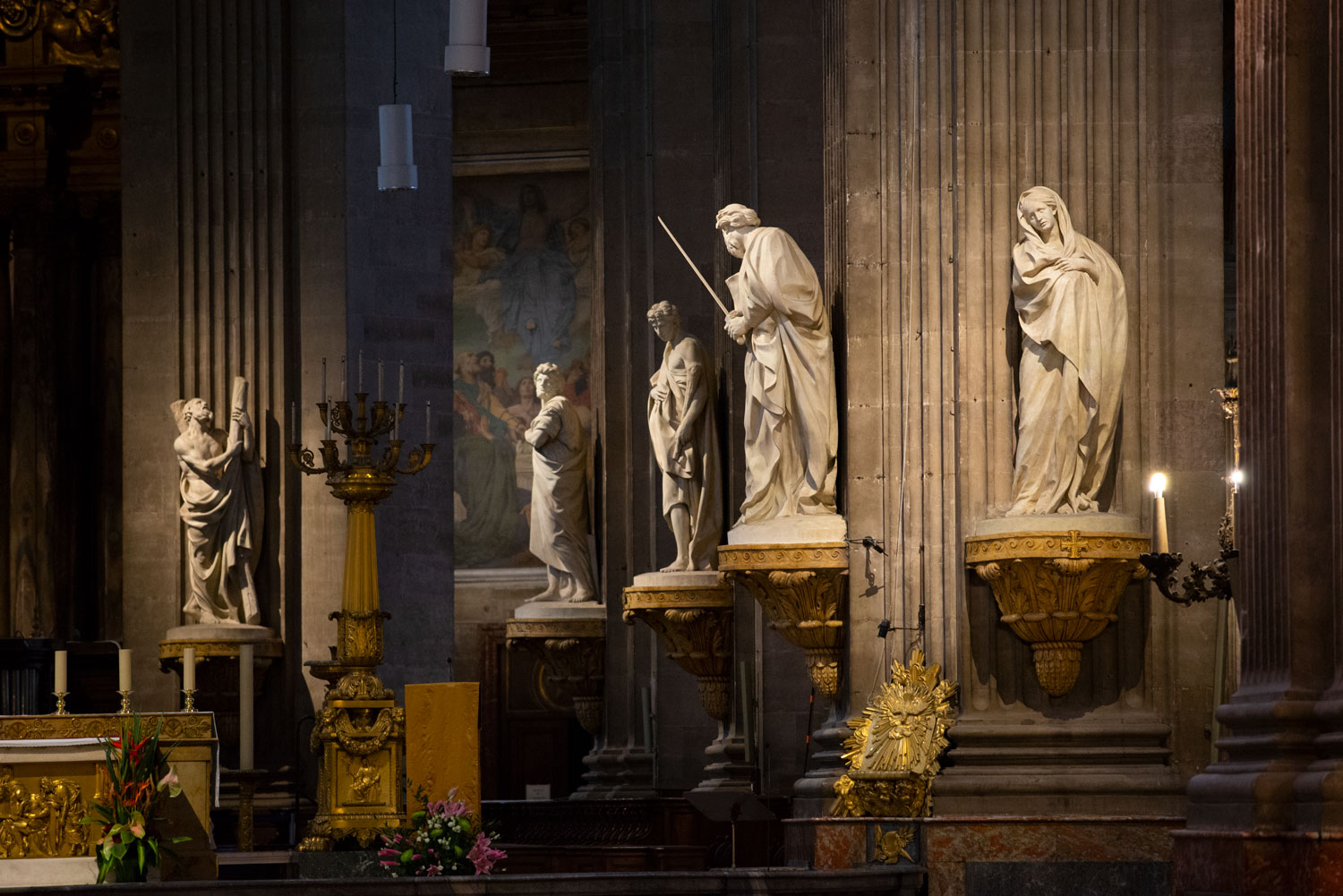Saint Sulpice Church - Paris’s Temporary Cathedral
Photos by Forrest Anderson; Graphics by Donna Rouviere Anderson
One of the joys of wintertime in Paris is popping into one of the city’s iconic old churches to enjoy a quiet moment among the exquisite marble statues, paintings and architecture.
That isn’t going to happen this year for most would-be tourists because France is in the midst of its fifth wave of COVID-19 and is on the CDC’s list of high risk travel destinations.
This blog is a chance to take a brief break for a digital stroll through Saint Sulpice, Paris’ second largest church and the city’s temporary cathedral while Notre Dame de Paris is being restored after the fire that gutted it in 2019.

The approach to Saint Sulpice Church through a narrow street in the Latin Quarter of Paris.
Saint Sulpice was the site of protests by hundreds of Parisians last year against a national lockdown that prohibited gathering for religious services. This year, 90 percent of French adults are vaccinated, and the government has not imposed new lockdowns despite surging COVID cases.
Saint Sulpice’s Turbulent History
The pandemic is just one more upheaval for Saint Sulpice, a two-towered neoclassical church in Paris’s Latin Quarter that was built in the 1600s in the wake of the turbulent Protestant Reformation and the resulting Catholic resurgence called the Catholic Counter-Reformation. The current Saint Sulpice church is the third on the same site, the first having been built in the 7th century and the second in the 13th century.
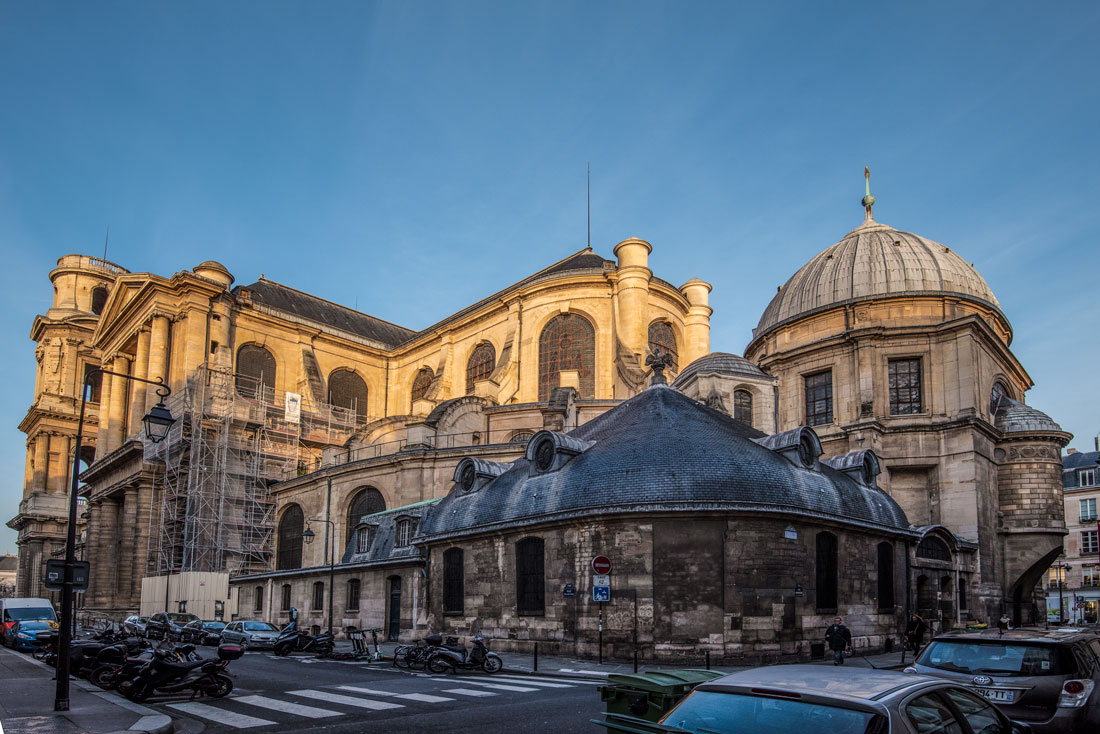
The current church is known for its historical connection to the Catholic Counter-reformation that revived the Catholic church in the 1600s and kept the country predominantly Catholic while other major European countries moved to Protestantism.
Martin Luther’s Ninety-Five Theses opposing the abuse of the sale of indulgences by Catholic priests was published in Germany in 1517, setting off the Protestant movement and a devastating series of religious wars all over Europe.
In France, King Francis I in 1532 and King Henry II after him supported Protestant German princes abroad while repressing the spread of Lutheranism at home. Calvinist preachers from other countries entered France in the 1550s and set up hundreds of underground Calvinist congregations there. Many nobles in France and other parts of Europe supported the Protestant Reformation because of the prospect of taking over rich Catholic church properties. Protestants destroyed images and statues in Catholic churches in France and some Catholics responded by rioting and massacring Protestants
After King Henry II died in 1560, his wife Catherine de’ Medici became regent and supported religious toleration in the 1562 Edict ot Saint-Germain, which allowed Protestant Huguenots to worship publicly outside of towns and privately in them. Hostilities broke out anyway, the edict was revoked and a string of eight religious wars ensued with Paris as a key battlefield at times. The wars ended in 1598 when King Henry IV issued the Edict of Nantes granting a degree of toleration to Protestants in France. This lasted until 1685, when the peace broke down and Protestant Huguenots were expelled from France.
It was in the context of this religious upheaval that the current Saint Sulpice Church was built. Protestants were not alone in their criticism of Catholic priests. The sale of both indulgences and religious positions meant that many priests who had bought their positions knew little about Christian doctrine. Many priests were sexually promiscuous and lived luxurious lives on the proceeds of the sales, including priests in high positions in the church. Some were barely literate. Many Catholics, while remaining loyal to the church, agreed that the priesthood was in disarray and their poor training, lax morals and corruption were serious problems. As more Europeans could read the Bible in their own languages, they recognized the gap between the priests's conduct and Christ's teachings.
To address the problems, the pope established new religious orders that were told to combat Protestantism by educating the population about Catholicism. The Catholic Church also used baroque art as visual aids to teach people about Catholicism.
In this environment, French priest Jean-Jaques Olier (1608-1657) with two other men formed a small community in the village of Vaugirard near Paris. They instructed eight seminarians in theology and morals. When the pastor of the village church went on an extended vacation, Olier and the others reformed the parish. The men were part of the movement for spiritual renewal and religious reform that included French church luminaries Vincent de Paul and a number of others who were later canonized as Catholic saints.
The priest of the Church of St. Sulpice in Paris was so impressed by the results of Olier’s reforms that he turned the influential Saint Sulpice parish, which had the population of a large city, over to Olier. Saint Sulpice was the largest, most fashionable parish in Paris, but it had many poor as a result of the wars.
Olier trained priests in how to help the poor, the uneducated, beggars, domestic servants, working people, the aged and others. He formed 13 centers for the instruction of children and adults. Olier also organized debates on Catholic doctrine for Calvinists, hundreds of whom returned to Catholicism. He waged a campaign against immoral and heretical literature and obscene pictures. He distributed pamphlets, religious pictures and prayer books to people who didn’t attend church and opened a bookstore at the church to supply lay people with good literature.
Olier became a leading figure in the Counter-Reformation drive to train priests to do a better, purer job of administering parishes and helping the needy. In 1645, he founded the Society of St. Sulpice, which established seminaries throughout France that became known for their moral and academic teaching. Those who attended were secular priests who were not bound by special religious vows.
During the 1648-1653 Fronde, a civil war over a rise in taxes that caused widespread misery and famine, Olier and his priests supported hundreds of families, providing clothing and shelter for many.
Olier founded a house of refuge for orphan girls, a shelter and reform center for women rescued from prostitution and for young girls exposed to prostitution, and many free schools for poor girls. He provided free legal aid for the poor and gathered under one roof nuns who had been driven out of convents and had fled to Paris for refuge during the wars.
He led a movement against duelling with the aid of renowned military men. In response to the Protestant emphasis on lay people reading the scriptures and seeking their own religious inspiration, Olier inspired many lay people to practice a devout life that included daily meditation, spiritual reading and acts of piety as well as more exact carrying out of their secular duties.
Olier became one of the masters of a doctrine of spirituality called the French School that developed during his lifetime. The adherents of the school believed in a deep, total renunciation of self to live the life of Christ. Olier wanted in this way to make the whole world into one church in which all voices spoke with the voice of Christ.
Olier, who was from an upper class family, persuaded many rich nobles, members of the court and others to provide the financial means for his charitable endeavors. Among them was building the current Saint Sulpice church to accommodate the spiritual needs of the large number of adherents who the Sulpicians drew to the church amid the Catholic revival.
Anne of Austria, wife of King Louis XIII, laid the church’s first foundation stone in 1646, but wars and a shortage of funds periodically stalled the construction while a series of five eminent architects worked on it. It was dedicated in 1745, and work continued on it after that. The church was dedicated to Saint Sulpitius the Pious, a 7th century bishop of Bourges who spoke out against the Merovingian king of France because he imposed high taxes.

The building, unlike the Gothic-style Notre Dame, is a blend of baroque and neoclassical style, with two bell towers and a facade with Roman-style pediments and columns.
The building facade proved somewhat problematic - its pediment was struck by lightning in 1770 and replaced with a design considered more correct for classical architecture. The two towers on the front of the building are mismatched in height and style because one was rebuilt and modified between 1777-1780 to make it taller and more neoclassical. Before the south tower could be modified to match, the French Revolution of 1789 intervened, so the south tower was never replaced.
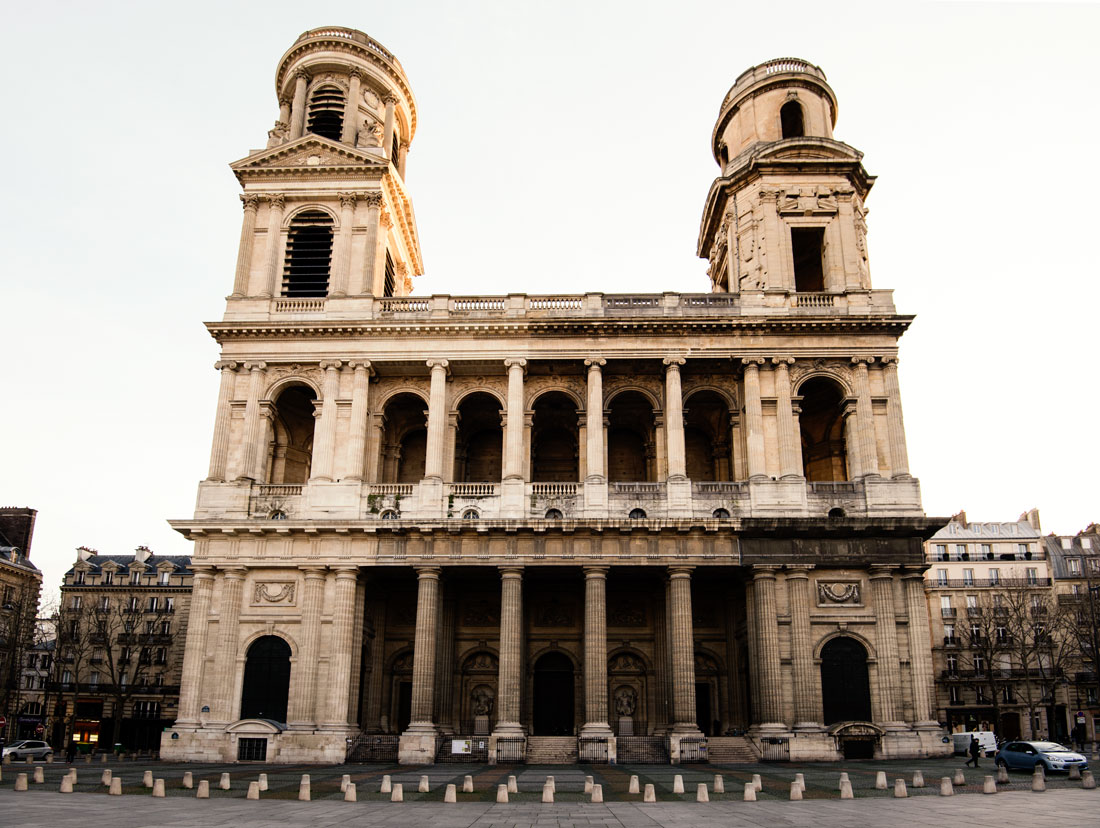
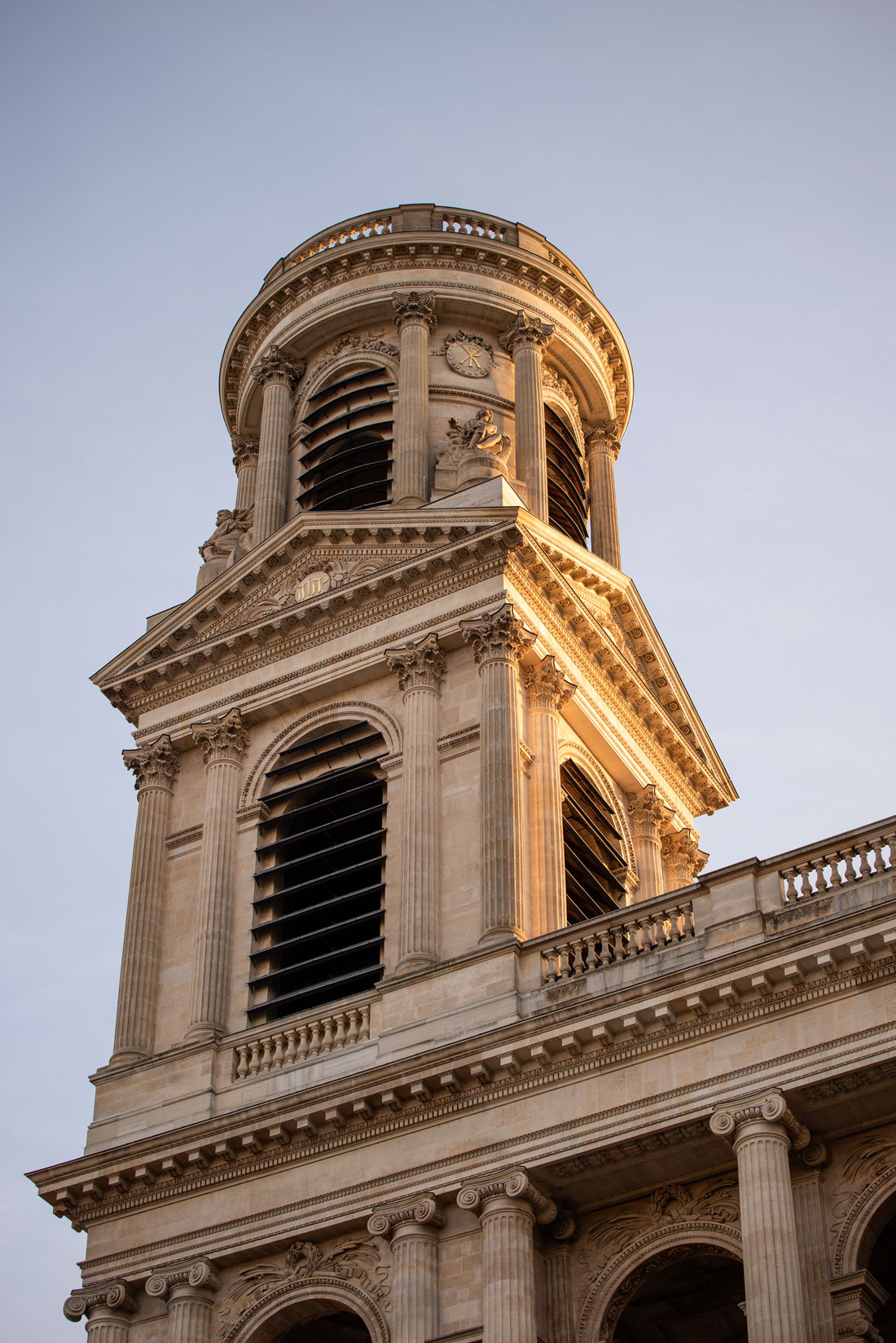
The North Tower.
During the French Revolution, Christianity was suppressed and Saint-Sulpice became a Temple of Victory for worship of the "Supreme Being.” Revolutionary orators spoke from the church’s famed pulpit.

Much of the church’s interior was destroyed during the revolution. Olier had been interred in the church, but his remains were lost except for his heart, which is preserved in the Sulpician seminary in Issy-les-Moulineaux, France.
During the revolution, the Society of Saint Sulpice’s superior general, Jacques-André Emery, believed he should submit to the laws of the new republic and be loyal to the country’s constititon, but he opposed the requirements of the revolutionary government's Civil Constitution of the Clergy. Priests who refused to adhere to this document were banned from preaching in public or practicing baptisms and marriages, although they could continue to celebrate the Mass. The issue caused deep divisions in French society, with many women attending masses held by those who had defied the oath and men attending mass officiated by those who had taken the oath.
Seminaries were closed, so Emery sent some Sulpicians to the United States to found the first American Catholic seminary in Baltimore, Maryland. After Napoleon rose to power and reached a compromise in 1801 with Pope Pius VII that reopened the churches, priests were allowed to return from exile or hiding and resume their work in churches. The government did not return church property, so Saint Sulpice and other Catholic churches remain state property today. However, the churches were allowed to be restored and worship in them resumed. Accordingly, the extensive damage to Saint Sulpice was repaired during the 19th century.
One of France’s greatest writers and a proponent of restoring the churches, Victor Hugo, was married in the church in 1822.
In 1870, when a revolutionary government called the Paris Commune seized power in Paris for more than two months, a radical faction called the Club de la Victoire chose Saint-Sulpice as its headquarters. The Commune was suppressed by the French Army during what was called The Bloody Week.
Saint Sulpice caught fire on March 17, 2019, and people attending an organ concert alerted firefighters. The doors, a stained glass window and a bas relief were badly damaged, and a staircase near the doorway went up in flames. Police later confirmed the fire was an arson attack. The year before the attack, 877 attacks on Catholic places of worship were recorded, a five fold increase in ten years. Officials blame the attacks on increasing hostility toward religion.
The same year, the state funeral for former French President Jacques Chirac was held at the church. Representatives from about 175 countries, including 69 past and present heads of state, government and international organizations attended.
Features of Saint Sulpice’s Interior
Shell fonts
On either side of the church’s entrance are holy water fonts made from two halves of an enormous clam shell (Tridacna gigas) that the Venetian Republic gave to King Francis I in the early 16th century. The shells are among the most famous giant clam shells in the world. Collecting sea shells became a fad among the European elite by the 17th century, sparked by enormous clam shells brought to Europe by the Dutch East India Company from Indonesia. Some shells were valued more than paintings that are now worth millions.
Two hundred years after the clam shells were given to the king, the 18th century sculptor Jean-Baptiste Pigalle (1714-1785) mounted them on oceanic marble bases for use as holy water fonts. Giant clam fonts also are in other Catholic churches around the world.
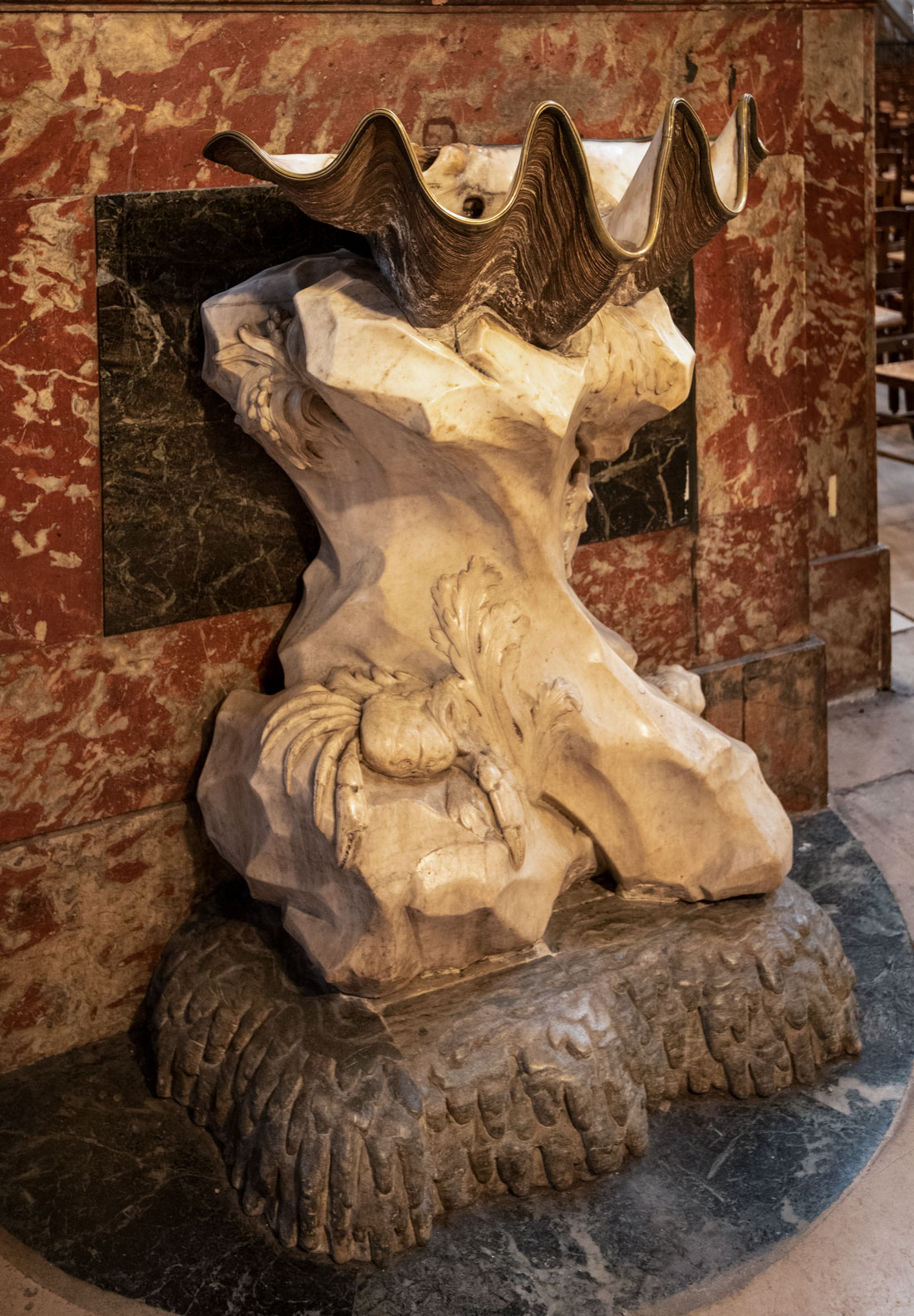
The Chapel of Our Lady
Pigalle, one of the most popular sculptors of his day, also designed the white marble statue of Mary in the Lady Chapel at the church’s far end. It is considered one of his greatest works. Pigalle’s student and nephew-in-law, Louis-Philippe Mouchy did the stucco decoration surrounding it.

The chapel, which is used for private worship, was decorated by Italian decorator, architect and painter Giovanni Niccolò Servandoni (1695-1766), who also decorated sets for prestigious opera and other productions.
The statue replaced an earlier solid silver one by 18th century neoclassical sculptor Edmé Bouchardon that had been cast from silverware donated by parishioners. It was known as “Our Lady of the Old Tableware.”
The Saint Sulpice Gnomon
Saint Sulpice’s Gnomon or Meridian Line was a type of sundial that was created to provide the exact time of day to ring the church’s bells, to verify the computation of the dates of the Christian feasts of Easter and Pentecost, and to improve the accuracy of other astronomical data.
Parish priest Jean-Baptiste Languet de Gergy (1674-1750) commissioned English clockmaker Henry Sully, who lived in France, to build the gnomon. Sully inlaid a meridian line of brass across the floor. Because the floor wasn’t wide enough to accommodate the shadow of the winter solstice, the brass line was extended up a white nearly eleven meter-high marble obelisk. At the top of the obelisk, which is dated 1743, is a sphere surmounted by a cross.
A small opening with a lens was set up in the south transept window about 80 feet off the ground so that a ray of sunlight could shine onto the brass line at various points throughout the year. At noon on Dec. 21, the winter solstice, the ray of light touches the brass line on the obelisk. At noon on Mar. 21 and Sept. 21, the spring and autumn equinoxes respectively, the ray touches an oval piece of copper in the floor near the altar. The gnomon was important in setting the date for Easter, which was the first Sunday after the first full moon after the Spring Equinox.

The Gnomon is the brass line that is visible running across the floor in the right corner of this photo and extending up the obelisk on the left. Light from a window falling on the line helped the priest determine the time of day as well as the solstices and equinoxes.
The gnomon also was used for other scientific measurements, which may have protected the church from being destroyed during the French Revolution.
Tourist interest in Saint Sulpice temporarily spiked after the 2003 publication of the bestselling novel The Da Vinci Code. The Da Vinci Code is the narrativie of a fictional treasure hunt through Paris in which a series of historical clues lead to the Holy Grail, which is the tomb of Jesus Christ’s Biblical follower Mary Magdelene.
In the novel, the church gnomon is fictionally cast as a pagan astronomic device and given the name Rose Line. The novel made the inaccurate claim that the brass line was the Paris Meridian, even though Paris’s Zero Meridian is actually 100 meters west of the church. Although the church actually has no monks, a murderous monk In the novel uses the brass strip as a clue in the treasure hunt.
The church posted the following sign as a result of the novel:
“Contrary to fanciful allegations in a recent best-selling novel, this [the line in the floor] is not a vestige of a pagan temple. No such temple ever existed in this place. It was never called a «Rose-Line». It does not coincide with the meridian traced through the middle of the Paris Observatory which serves as a reference for maps where longitudes are measured in degrees East or West of Paris….”
A monogram SP a few meters away from the Gnomon stands for Saint Peter, Saint Sulpice’s patron saint, not for Priory of Sion, an imaginary secret society in The Da Vinci Code, the sign said.
Conspiracy theorists also have interpreted artist Eugene Delacroix’s painting in one of the chapels, Saint Michael Slaying the Dragon, as the dragon’s iron crown representing the French king’s throne and Saint Michael as the last Templar Knight bringing down the French monarchy per an ancient curse. Church officials scoff at such notions – saying the theme of Michael slaying the dragon is a common Christian one.
The Archdiocese of Paris refused to give director Ron Howard permission to film inside Saint-Sulpice when he was directing The Da Vinci Code in 2005.
The church also has been featured in a number of other novels, at least one opera and a South Korean music video.
Languet, in addition to commissioning the construction of the gnomon, also was known for refusing to deliver the last rites to the profligate Marie Elisabeth d’Orléans, the eldest daughter of Philippe II, the Regent of France, because she had given birth to illegitimate children and was known for engaging in scandalous escapades. She survived the last of the childbirths and secretly married a few days later in hopes of blunting public outcry caused by the birth and Languet’s refusal to deliver the sacrament to her, but she never fully recovered and died about three and a half months later at age 23.
The Saint John the Baptist's Chapel contains the mausoleum of Languet, who completed the church. The mausoleum is topped with a statue of Languet representing the Christian soul that overcomes death.
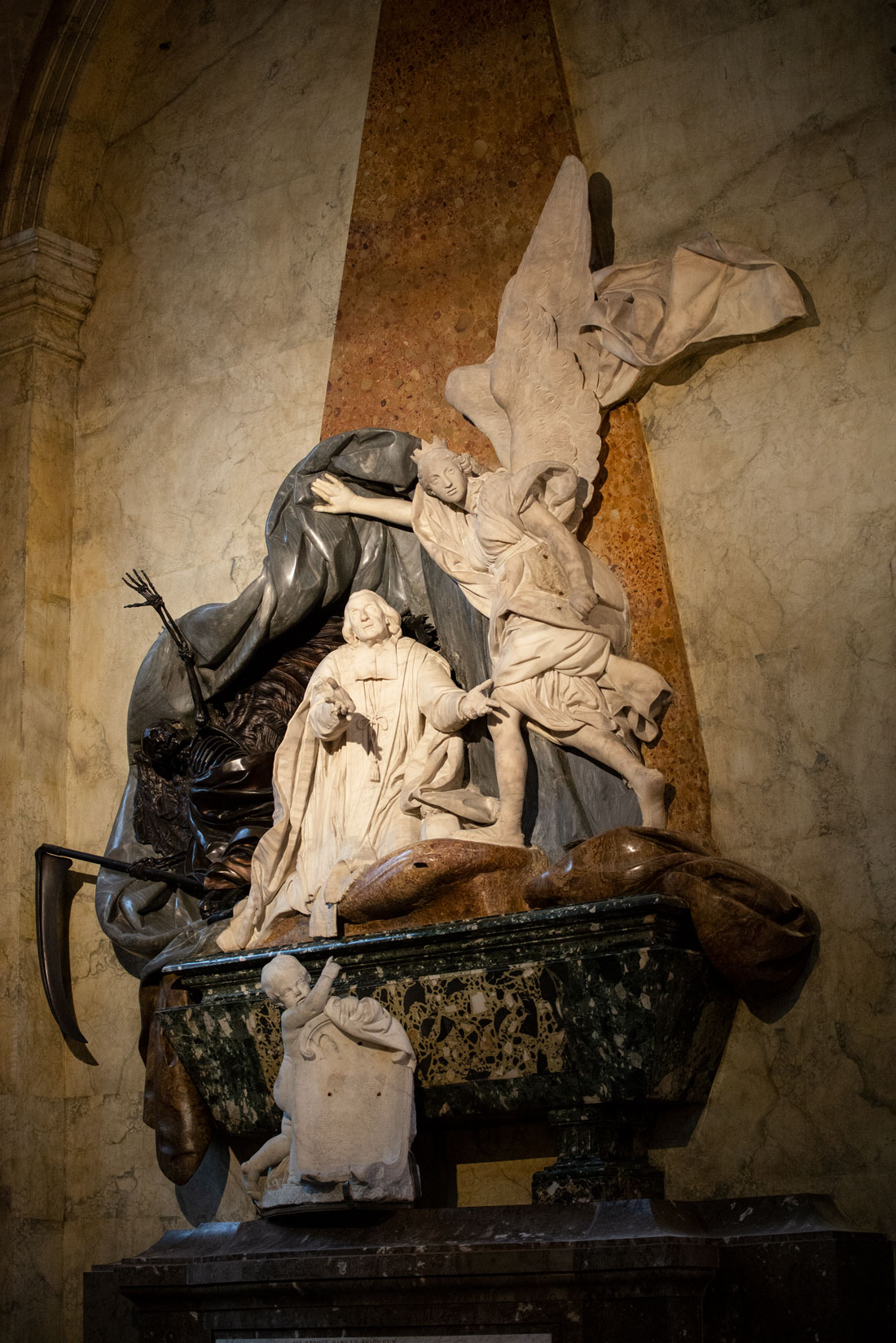
The Chapel of the Holy Angels
The Chapel of the Holy Angels in the church is a massive arched space filled with paintings by Eugène Delacroix (1798-1863), the leader of the French Romantic school of painting. His murals are among the most famous 19th century additions to the church. They include Jacob wresting with the Angel, being wounded in the leg and given the name Israel by God; Heliodorus Driven from the Temple, a scene from the Second Book of Maccabees in which Heliodorus, envoy to the king of Syria, rides his horse into the Temple of Jerusalem; and on the ceiling of the chapel, Saint Michael Slaying the Dragon.
The Grand Organ
The church is renowned for its organ, one of the largest in the world. It was installed in the loft in 1781, and is one of the world’s most magnificent musical instruments with 6,600 organ pipes. The organ has intricate wood carvings of musicians playing harps and lyres. The organ was built by French organ builder Francois-Henri Clicquot (1645-1719), a member of a prominent organ building family that built other well-known organs including those in the Chapel of the Palace of Versailles and the Rouen Cathedral. Aristide Cavaillé-Coll (1811-1899), the most distinguished 19th century organ builder and an inventor and innovator of organ design, later renovated and enlarged the organ case. Considered his greatest work, it is almost the same as it was when he completed it in 1862.
The organ is played on Sundays for a 15-minute prelude at 10:45 a.m. before the 11 a.m. mass, during which the organ also is played. A 30-minute Sunday organ concert is held after the mass.
The church has had a long line of renowned organists. The church also has an 1858 choir organ by Aristide Cavaillé-Coll.
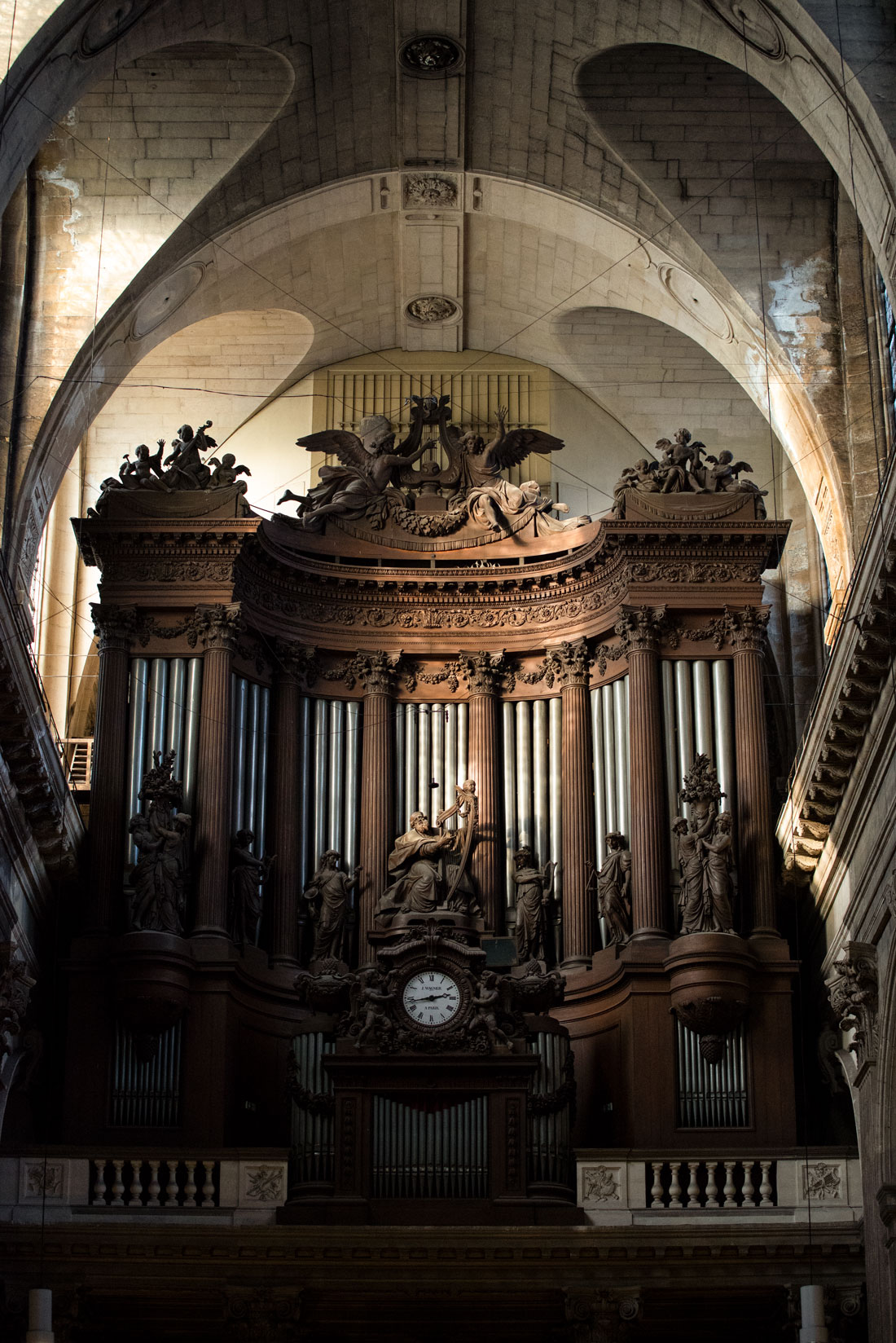
The church has stained glass windows that date back to the 1670s and statues by renowned sculptors who also produced work for the Palace of Versailles and other monuments in Paris. The church also has a statue of Saint Peter similar to the one in the Basilica of Saint Peter in Rome.
A side chapel is dedicated to French priest Jean-Baptiste de La Salle (1651-1719), a French priest and educational reformer and canonized saint who is known as the founder of popular education in France because he founded the Institute of the Brothers of the Christian Schools to teach the children of the poor.
De La Salle was a student at the Seminary of St. Sulpice and the Sorbonne, although he didn’t know Olier. The dormitory wing of St. Sulpice where De La Salle lived was demolished in 1802 and today is the large square in front of the church.
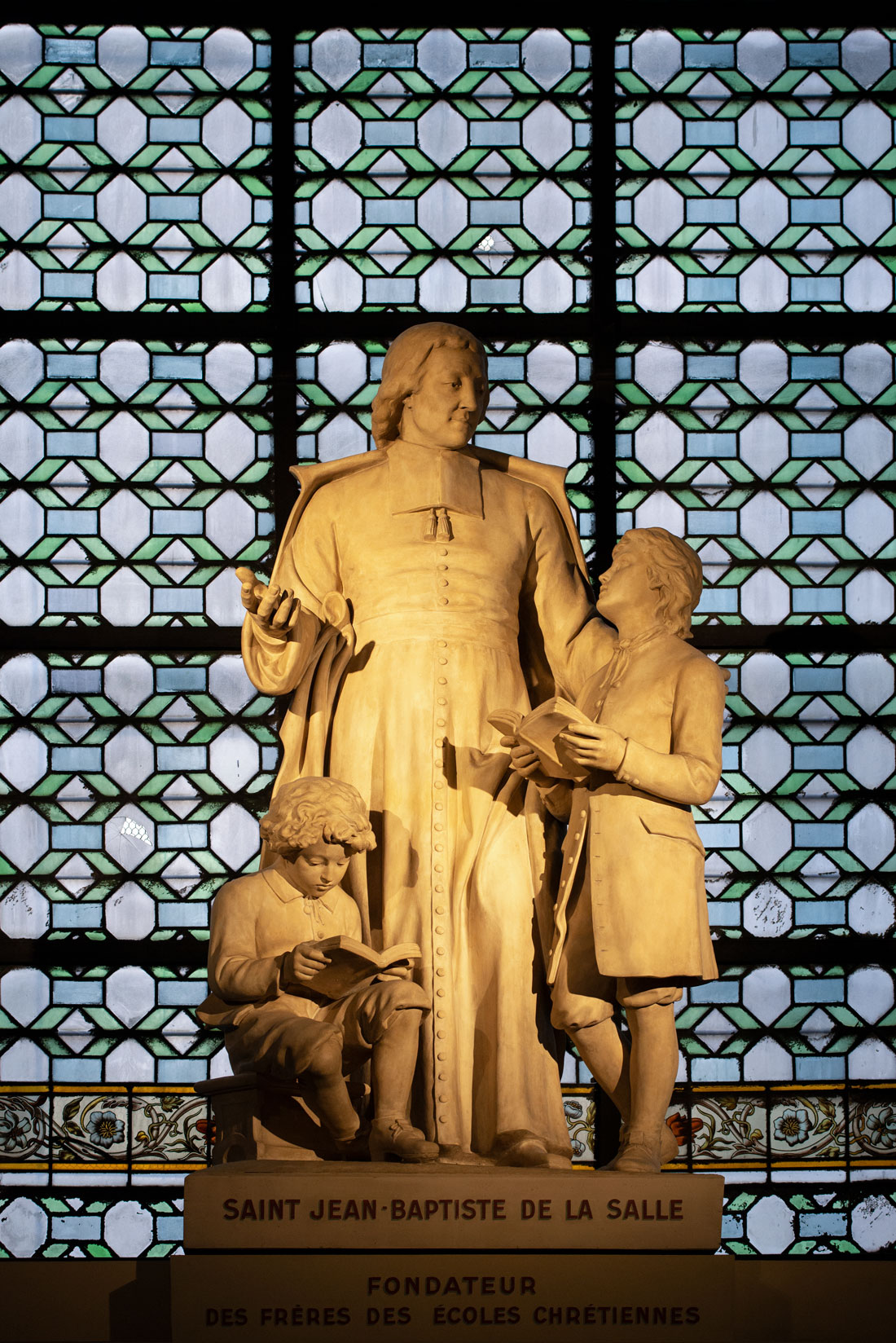
Mass is celebrated several times daily at the church, along with priests hearing confessions, weddings and baptisms. During services, visitors can’t get access to the Lady Chapel in the back of the church, so it is a good idea to check the times of services in advance and go at other times to see it.
Check out these related items
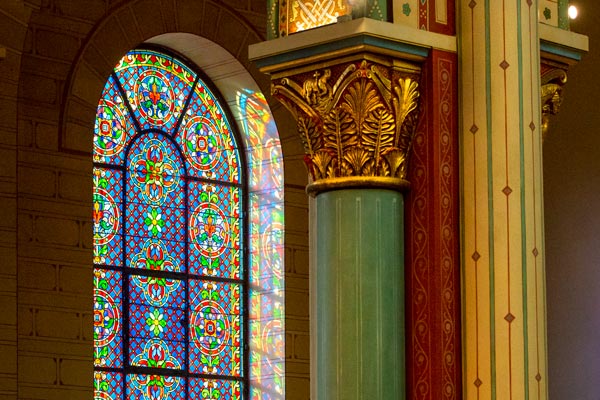
Paris’s Oldest Church Restored
Paris' oldest church, Saint Germain des Prés, is emerging from layers of grime and soot as a meticulous restoration reveals its vibrant color.
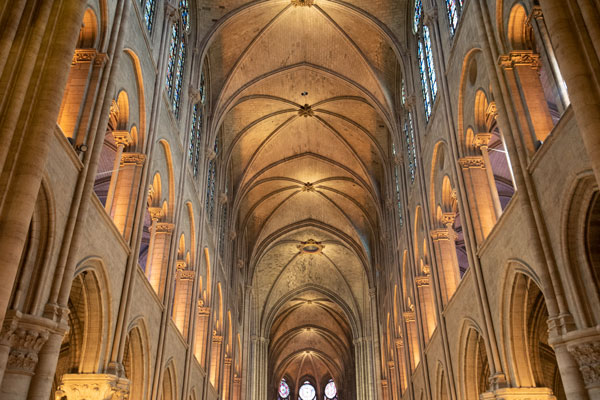
The World Mourns Notre Dame
Notre Dame Cathedral of Paris, France's national cathedral, was badly damaged in a fire.
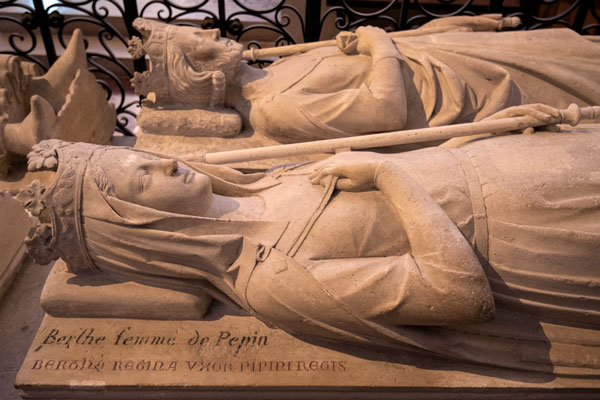
Resting Place of Kings
France's dazzling royal necropolis, the Basilica of Saint Denis, is also the birthplace of Gothic architecture.
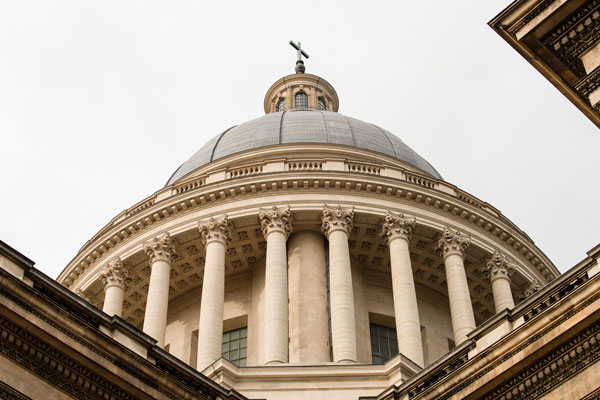
The Panthéon of Paris
The Panthéon in Paris, France's national mausoleum, embraces the contradictory themes of the nation's turbulent history.

Gothic Architecture - Imagining Infinity
Gothic architecture has been called both magnificent and monstrous. We examine why.
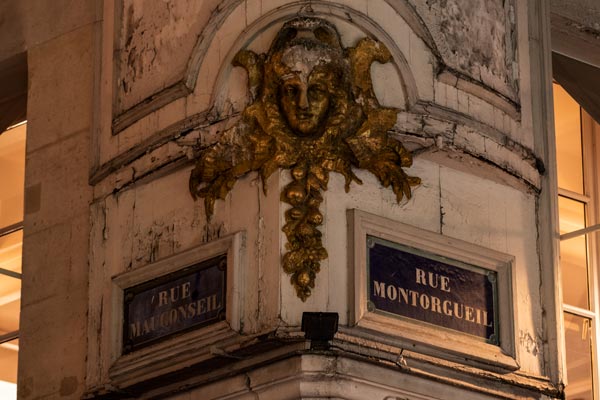
Paris’s Oldest Food Market
Rue Montorgueil in Paris began as a village street with a medieval church and food market. It has retained that character.
